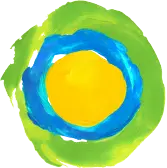Organización Sin Fin de Lucro
Visual Understanding in Education
Acerca de
Visual Understanding in Education (VUE) conducts educational research focused on aesthetic and cognitive development that results from interaction with art. Based on its findings, VUE develops programs for schools and museums across the United States and in Eastern Europe. VUE has published an arts education curriculum called Visual Thinking Strategies (VTS).
VTS is an elementary school curriculum that uses a learner-centered method to examine and find meaning in visual art; uses art to teach thinking, communication skills and visual literacy; measurably increases observation skills, evidential reasoning, and speculative abilities, and the ability to find multiple solutions to complex problems; uses facilitated discussion to practice respectful, democratic collaborative problem solving among students that transfers to other classroom interactions, and beyond; and uses eager, thoughtful participation to nurture verbal language skills, and writing assignments to assist transfer from oral to written ability. VTS produces growth, including visual literacy and greatly enhanced verbal and thinking skills, in all students, from challenged and non-English language learners to high achievers; encourages art museum visits to underscore connections to art and to integrate a community resource into students’ lives and meets state standards in art, language and social studies; improves test scores in reading and writing.
Visual Understanding in Education (VUE) conducts educational research focused on aesthetic and cognitive development that results from interaction with art. Based on its findings, VUE develops programs for schools and museums across the United States and in Eastern Europe. VUE has published an arts education curriculum called Visual Thinking Strategies (VTS).
VTS is an elementary school curriculum that uses a learner-centered method to examine and find meaning in visual art; uses art to teach thinking, communication skills and visual literacy; measurably increases observation skills, evidential reasoning, and speculative abilities, and the ability to find multiple solutions to complex problems; uses facilitated discussion to practice respectful, democratic collaborative problem solving among students that transfers to other classroom interactions, and beyond; and uses eager, thoughtful participation to nurture verbal language skills…
Áreas de Impacto incluyen
- Arte & Música
- Infancia & Juventud
- Educación
Ubicación
- 119 W 23rd Street, New York, NY 10011, United States
Suite 905


